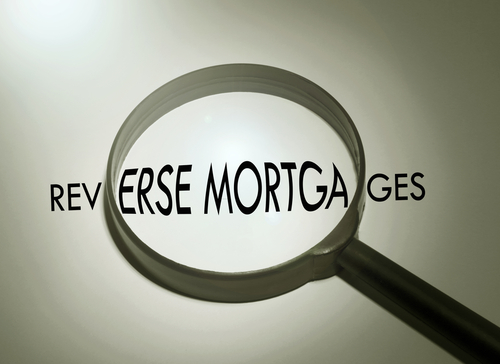 It seems you can’t read a story about reverse mortgages these days without some financial expert complaining about their interest rates.
It seems you can’t read a story about reverse mortgages these days without some financial expert complaining about their interest rates.
Case in point: Financial planner Rob Montague, who tells the Globe‘s Rob Carrick, “My beef with the reverse mortgage is the rate. I believe it is predatory.”
Mr. Montague doesn’t share any math to justify his position, but that’s typical.
With 2.75% 5-year fixed rates, many find it distasteful that lenders charge poor old seniors on fixed incomes rates in the 5%-range.
So, what’s a fair reverse mortgage rate then?
Base funding costs are about 2.40% as we speak (that’s the 5-year GIC rate for market leader HomeEquity Bank). Lenders then mark that up a little over three points, which puts today’s 5-year reverse mortgages at 5.49% to 5.59%.
The question we’d love to ask guys like Montague is, what rate would you charge, given you:
- Get no principal back for a decade
- Get no interest back for a decade
- Must pay interest to your depositors every month/quarter/year
- Must assume liquidity risk given most of your funding comes from stodgy old GICs
- Must pre-pay all your labour, marketing, underwriting, fulfillment, regulatory, commission and overhead costs upfront
- Must assume the risk that home prices fall and you don’t get all your money back?
Clearly, if reverse mortgage rates had a three-handle (i.e., sold for 3.99% or below) they’d be flying off the shelves. Wait. They’re already flying off the shelves, to the tune of 22% growth in August, year-over-year, according to OSFI data. That incessant demand also keeps rates higher.
But costs are costs and risk is risk. There’s a reason only two real lenders sell this product. The profits are not as outlandish as some would have folks believe.
 That’s not to say Canadian reverse mortgage rates are a steal. They’re actually high on a global basis (albeit, not predatory-high).
That’s not to say Canadian reverse mortgage rates are a steal. They’re actually high on a global basis (albeit, not predatory-high).
Compared to the U.S., Canadian reverse mortgage rates are about 60-70 bps higher. But we have to remember: the Americans have a far more liquid and far more competitive market. Sixty-odd beeps is probably about as low as you could possibly expect reverse mortgage rates to get in this country…someday, way down the road. (P.S. To critics advocating for lower reverse mortgage rates, write CMHC and tell them to develop a reverse-mortgage securitization program to create liquidity, as Ginnie Mae has done.)
Anyways, to these advisors complaining about how high reverse mortgage rates are, what’s your advice for the elderly who can’t pay their bills but desperately want to retain their independence in their own homes?
Sell? Get a roommate? Cut your expenses? You shoulda saved more for retirement? Wait 10 years for reverse mortgage rates to drop 60 bps?
It’s so easy to preach and warn, until someone gets to the stage where they need cash to get through retirement. That’s when they discover that practical reverse mortgage alternatives are few and far between, and the price reflects that.

 log in
log in
3 Comments
The biggest issue with reverse mortgages isn’t the interest rate. It’s the fact that the financial services industry has a poor record of ensuring that customers are fully informed of the implications of their borrowing decisions, and that seniors are the most vulnerable portion of the population. There might be a small subset of the population for whom reverse mortgages really make sense, and who would take out a reverse mortgage if they were fully informed about the nature of the product. You don’t have to be unduly cynical to question whether the majority of reverse mortgage customers fall outside of that subset.
Additionally, there are some more general questions around why a senior rich in home equity should even be encouraged to stay in their home. First, a housing market characterized by low turnover and a high square footage per householder contributes to some of the pricing pressure in major metropolitan areas. Encouraging seniors to downsize, not subsidizing their decision to stay in inefficiently large houses through CDIC insured deposits, is the better public policy outcome. Second, the premise that home equity extraction is really required for core retirement needs is questionable. For most Canadians, CPP, OAS and GIS provide a high level of income replacement. Home equity extraction in many instances will result in the worst possible outcome for seniors: when they really need their home equity, to pay for support services in extreme old age, they’ll have squandered it on cruises when they were younger. This is a bad outcome both for the individual, and for the government- as the government will end up providing subsidized, lower quality care to the senior as they become more frail. Reverse mortgages are a prime example of how banks extract rents: by taking advantage of quirks in human psychology identified by behavioural economists like Kahneman. In the case of reverse mortgages, it’s a variant of hyperbolic discounting.
Regarding what Matt said, the majority of reverse mortgage customers don’t take a reverse mortgage because they have better options. Almost no one is stupid enough to pay 5-6% interest if they can borrow for much less.
As for kicking seniors out of their homes to make room for young people, what kind of socialist idea is that? Are you telling me retirees who work their whole lives to have a home to age in should move to a condo or rent so other people don’t have to pay as much for a house? We’re all going to be old some day. Do you want to be encouraged to leave your house before you’re ready? Seniors owe nothing to ANYONE. Canadians should vote out any politician who seeks to change that.
Most people don’t live to extreme old age. They live to 82 or thereabouts. If they want to take some cruises before they’re relegated to a hospital bed for the rest of their life, they should.